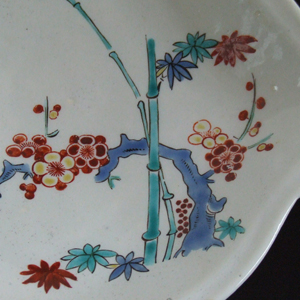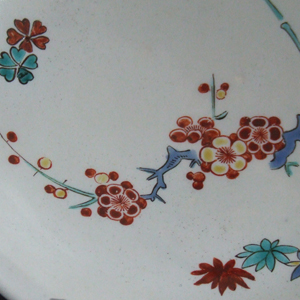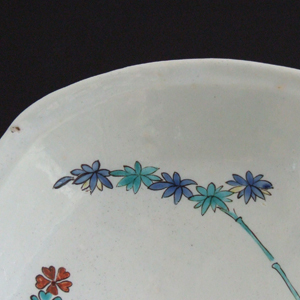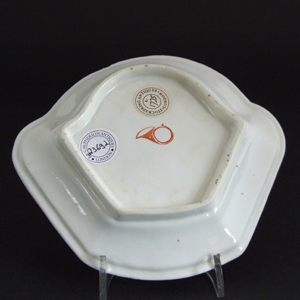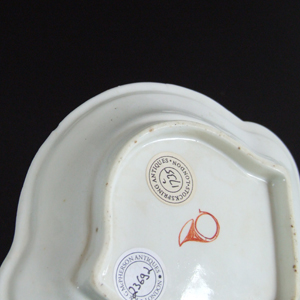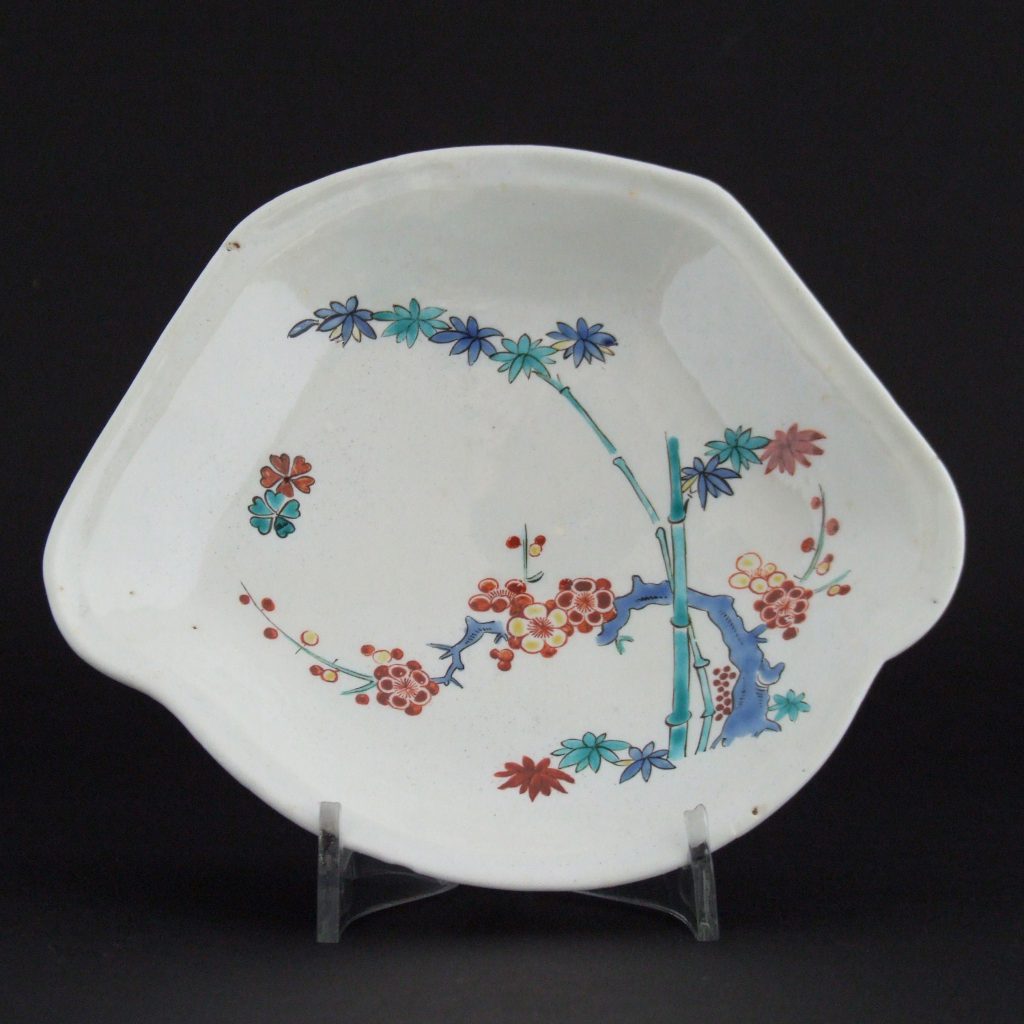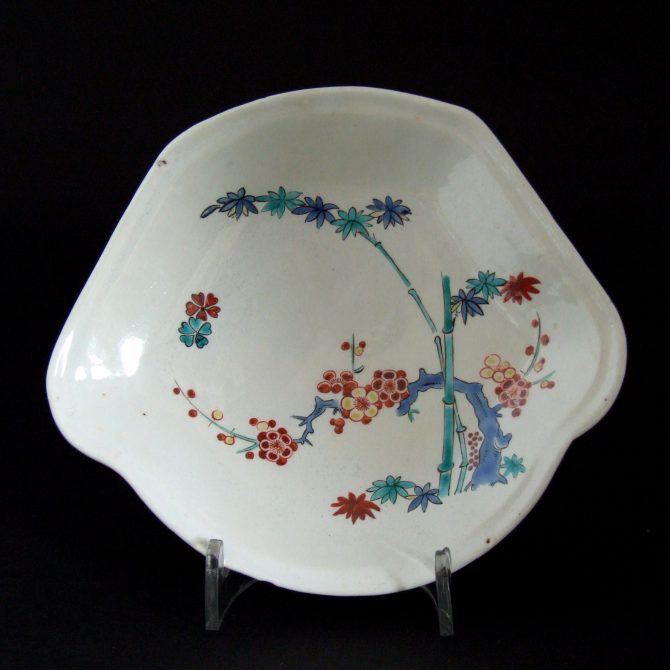
CHANTILLY c.1735 – 1740 French Soft-Paste Porcelain
An 18th Century Chantilly Soft-Paste Porcelain Dish in the Kakiemon Style c.1735-1740. The Shaped, Based on Japanese Porcelain Serving Dishes, is Painted in Kakiemon Enamels with a Design Close to the Japanese Original with Bamboo and a Gnarled Flowering Prunus Tree. The Base with a a Large Carefully Painted Hunting Horn Mark in Red for the Chantilly Porcelain Factory.
SOLD
- Condition
- In very good condition, one minute glaze loss near the rim on the top left side c.2 x 1 mm.
- Size
- Width : 13.5 cm (5 1/4 inches)
- Provenance
- The Donald Tryhorn Collection of English, French and Japanese Porcelain (label to base) The late Donald Tryhorn of Kingsbridge in Devon spent 30 years of his life collecting works of art, silver, pictures and furniture as well as antique porcelain. Kakiemon was one of his loves, porcelain of this style from his collection includes the Japanese Kakiemon originals as well as 18th century English and French soft paste porcelain in the Kakiemon style.
- Stock number
- 23692
- References
- For a Chantilly Kakiemon saucer of this design see our `Sold Items` number 18605.
Information
Kakiemon Porcelain :
Kakiemon decoration is usually of high quality, often delicate and with well-balanced asymmetric designs. The designs were normally quite sparse emphasizing the fine white porcelain body known in Japan as Nigoshide (milky white). The opaque white milky Nigoshide body was used on the finest pieces, it appears that it was reserved for fine quality enamelled decoration. Kakiemon porcelain was decorated with a great variety of imaginative designs which include elements such as the `banded hedge`, `flying squirrel`, and the `Quail and Millet` design. The `Three Friends of Winter` were also a very popular group of designs, other subject taken from nature include flowers (especially the chrysanthemum, the national flower of Japan) as well as birds and rock-work. Figural subjects such as the `Hob in the Well` were also popular. This design illustrates a Chinese folk tale where a sage saves his friend who has fallen into a large fish-bowl by throwing stones at it, braking open the pot. Banded-Hedges were a formal device within Japanese traditional gardens, they were often incorporated in designs, includes `The Three Friends of Winter` (Pine, Bamboo and Prunus). These three plants signify perseverance, as neither the pine nor the bamboo shed their leaves in winter and the plumb (Prunus) flowers at the very end of the winter, heralding the arrival of spring.
